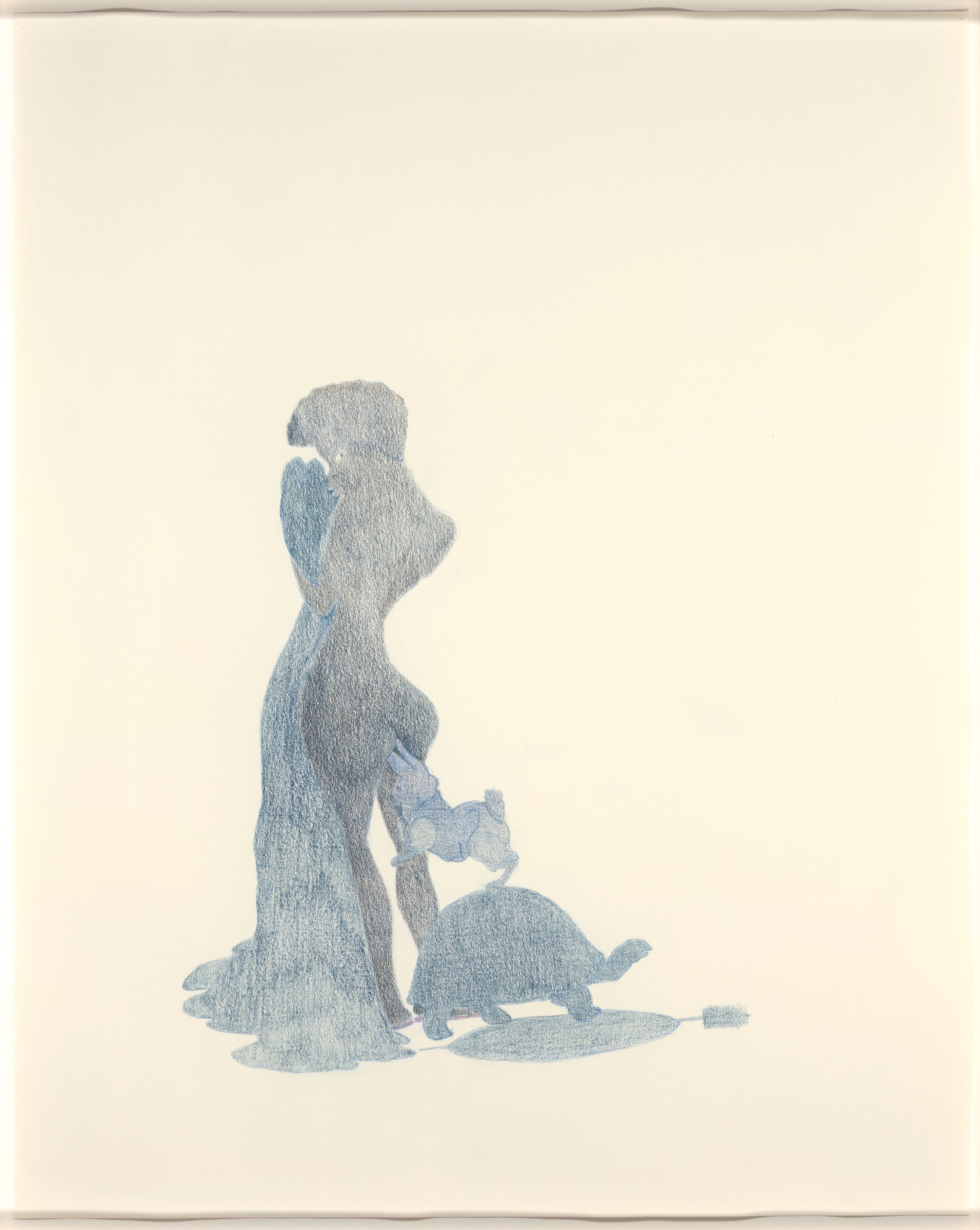In the Museum with Asha Iman Veal
Kara Walker, Fable of Belonging, 2003

Kara Walker, Fable of Belonging, 2003, black and colored pencils on ivory wove paper
Kara Walker, Fable of Belonging, 2003, black and colored pencils on ivory wove paper
by Zoya Brumberg (MA 2015)
“I’m not a fan of overly polite storytellers,” shared Associate Professor, Adj. Asha Iman Veal (MA 2017), who also serves as associate curator of the Museum of Contemporary Photography.
Veal works to deconstruct this approach in her teaching and curatorial practice. She believes the curator’s role is to challenge audiences—to question their preconceived notions and connect with art in new ways. That philosophy is part of what draws her to artist Kara Walker’s work.
Walker’s art does not try to be polite. It tells a side of American history that is often obscured. “Her work isn’t smoothing over anything. It remakes the violent absurdity of this country's hyper-racialized history into scenes of uncomfortable allegory,” said Veal.
In Walker’s drawing Fable of Belonging, the figure of a Black woman floating on the white page glances over her shoulder. She clutches a blue blanket that pools like water at her feet. The soft colored pencil impressions evoke three-dimensionality, alluding to facial features and depth through subtle shading. Brer Rabbit stands atop a tortoise; it is difficult to say whether he leaps to or from the female figure’s prominently accentuated derriere. The animals are symbols of fables, fairy tales, and even Southern mythologies that Walker so often references in her art.
Veal interprets that, as a Black American, the promise of fully belonging to American identity can sometimes seem false. People from non-Southern backgrounds might not immediately recognize the symbolism in Walker’s work. Veal notes that people interpret art through “the stories and the histories and the narratives they consciously hold within themselves.” The role of the curator is to push museum visitors into “some other space that maybe they don't know they can transgress yet.”
She brings her political identity and curatorial approach into her pedagogy. Classes like Being a Woman of Color in the Art World encourage her students to incorporate their identity and ideology into their art careers. In the course Spheres, graduate students explore concrete ways that art and artists can be political by studying global arts policies.
It can be difficult for many students to reconcile their identities and lived experiences with the expectations of the art world. Veal sees that defiance in Walker’s art—and incorporates it into her own practice. “Education at its best can be a space of constructive defiance and liberation,” she said. ■
